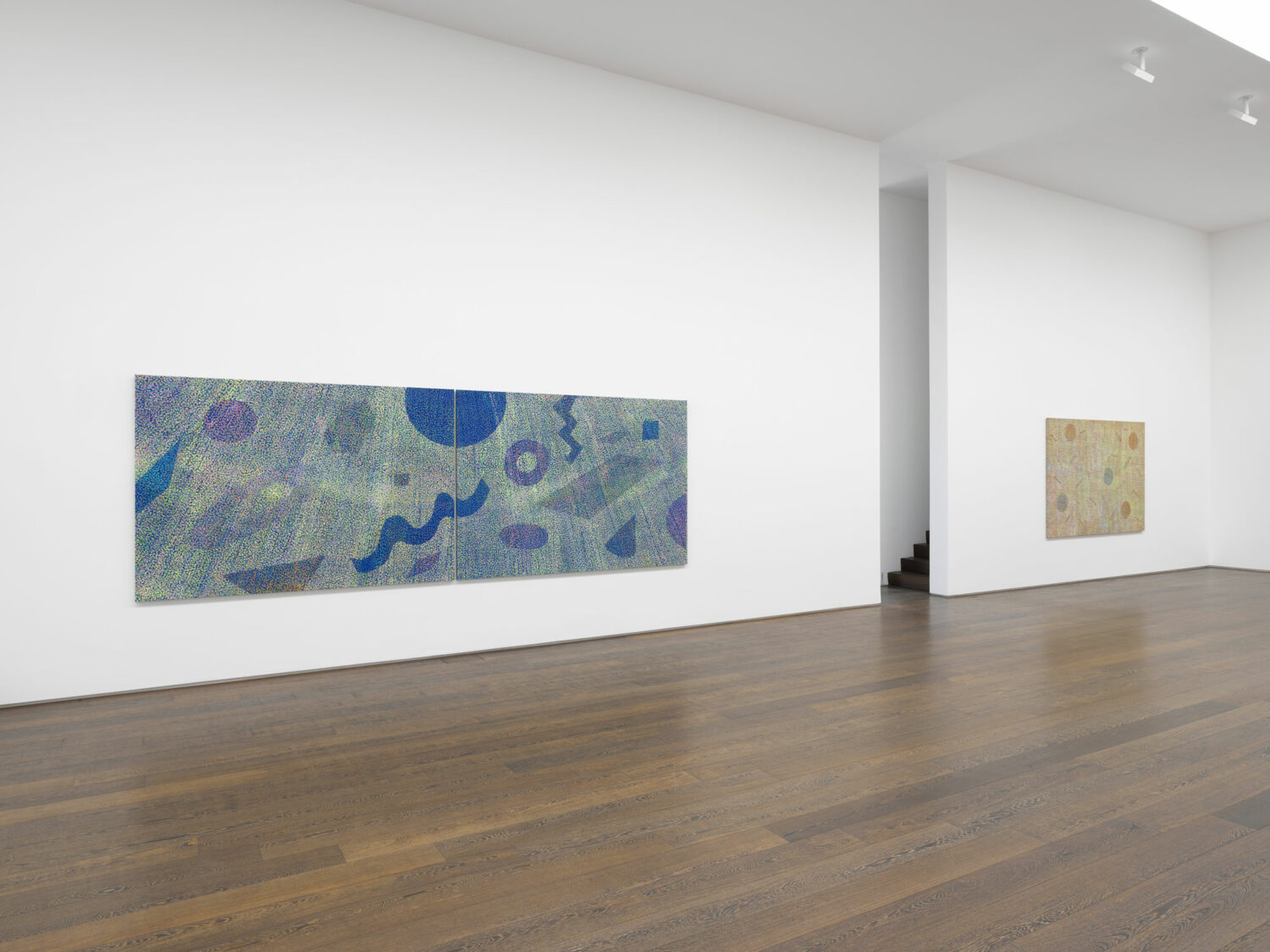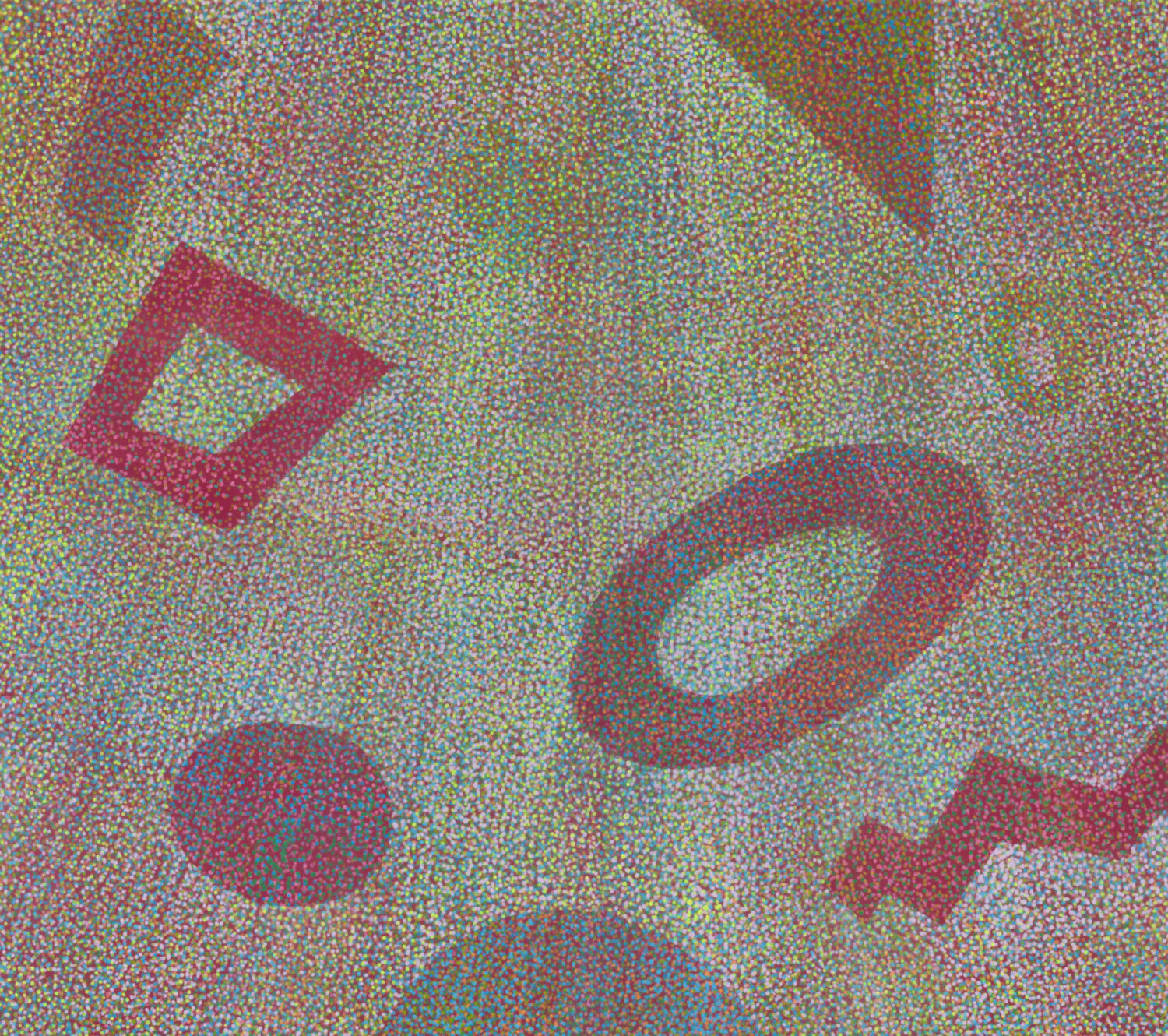Interview: Howardena Pindell On Colour Theory & The Politics Of The Circle
By Something CuratedHowardena Pindell is a pioneering American artist, curator, and educator. With a career spanning over fifty years, Pindell, hailing from Philadelphia and now 80, has continuously challenged audiences. As MoMA’s first Black curator, she made history. She was the first to step down in protest against the museum’s failure to denounce the display of Donald Newman’s controversial show, titled N***** Drawings, at Artists Space in 1979. She also played a crucial role in establishing the feminist AIR Gallery in New York. Pindell’s unwavering dedication to politics is evident in her diverse output, which, alongside other matters, addresses the intersecting issues of racism, feminism, violence and exploitation. The artist’s spray dot paintings are among her most iconic works. Pindell first created these sensuous paintings in New York in the early 1970s. Using various hole punchers and tools, she punched into discarded cardstock, manila folders and heavy watercolour paper, the result of which she used as templates, spraying paint through the perforations. In the past few years, for the first time in decades, she has revisited this technique with renewed excitement. A solo exhibition of Pindell’s work, open now and running until 29 July 2023 at Victoria Miro in London, marks the first presentation of these new paintings. To learn more about the evolution of Pindell’s practice, Something Curated spoke with the artist.

Something Curated: How did your early spray dot paintings in the 1970s come about?
Howardena Pindell: I became fascinated by the circle in my last year at graduate school at Yale University’s School of Art and Architecture. The circle for me as a point of interest started when I saw the work of a classmate, Nancy Muratta. As a child the circle was an indication that the glass or plate, etc. was only to be used by people of colour. I was very young, and my father took me to a root beer stand in northern Kentucky. At the time we were with my grandmother who lived in southern Ohio. It was a symbol used during segregation and Jim Crow. I think on some level I was undoing the hurt during those years. I was a figurative painter and slowly became abstract through the use of the circle, which I drew as circles and ovals using a template found at an architecture supply store. I cannot remember why I started spraying circles. I somehow acquired a hole puncher and started punching out of manila file folders. I found an art related tool which allowed me to spray acrylic paint. Originally the paintings were not stretched. They were nailed to the wall. I saved the punched-out dots and started numbering them and also wrote Phoenician letters on them. At the time I had a large loft and could get fresh air from the windows and wore a mask and gloves. As a figurative painter I used oil paint and became allergic to it.

SC: Can you talk about the evolution of your practice?
HP: My work started out as figurative. I grew up in a very conservative city, Philadelphia. At Boston University I was figurative and was trained to see abstract work as heresy. Yale turned my view of the many ways to work. From the early experiments with dots in drawing and painting, I started to incorporate figurative elements and text. I was a curator at the Museum of Modern Art in New York, working through the ranks over twelve years. It was after that that I turned to teaching – and I started to use text as well as started to do issue related paintings. (I have just retired from teaching art at Stony Brook University where I have taught for 43 years.) I started to experiment with different materials including imbedding foam shapes. At the same time, I was doing issue related paintings that had text and installation aspects. I started to experiment with my spray dot technique, incorporating geometrical forms. One of the earliest spray paintings had a rectangle in it. I was returning to that experiment and found that I was pleased and relieved by the results.

SC: You touched on how the circle first made its way into your work — what interests you in utilising it as a recurring motif today?
HP: I am amazed at how beautiful the circle can be. The works I made at the Dieu Donné Paper Workshop in 2021, made of abaca banana plant fibres that were coloured and made into paper, also utilised the circle. Abaca helps maintain the original dye colour. If you use cotton paper pulp, the colour fades as it dries. I was very pleased at the work I did there as the circle found a new home in my work.
SC: Can you tell us more about the pieces you created for your presentation at Victoria Miro?
HP: The pieces were a series I have been working on with large sprayed geometric forms, also made of circles. They are larger than the original rectangle I incorporated way back in the 1970s. There are a number of geometric forms that I incorporated in the new series. I bought a set of geometric forms made of a beautiful clear blue plastic. [The forms] are not very large… maybe 3 or 4 inches and are three dimensional.

SC: Could you expand on your relationship with colour?
HP: When I was a graduate student at Yale University’s School of Art and Architecture, I took Josef Albers’ Colour Theory course. It changed my use of colour forever. I became very interested in complementary colours. I was trained in art starting when I was eight years old, and a teacher spoke with my parents and said I should be taken to museums and should meet artists. At the Philadelphia Museum of Art, I was introduced to the work of Duchamp. That was an early trigger for me in terms of seeing unconventional works. He was not a colourist, but the experimental approach also contributed to my taking chances with colour.
SC: What are you currently reading?
HP: I love books. My father had a room in the house which he called his library and not his office. Frankly I have not had much time to read but have many books. One of my main areas of interest is worldwide enslavement. I also have many books about art around the world. I will be donating them to Lincoln University in Pennsylvania. My favorite magazine is called Ancient Egypt. I went there many years ago. The interesting tie to it is that, as a child, a family friend saw an Egyptian Fayum encaustic portrait painted on mummy wrappings. I looked like the portrait. That was my first trip to the Philadelphia Museum of Art.
Howardena Pindell: New Works is on show at Victoria Miro, London until 29 July 2023.
Feature image: Howardena Pindell, Tesseract #2 [Detail], 2023. © Howardena Pindell. Courtesy the artist and Garth Greenan Gallery, New York and Victoria Miro